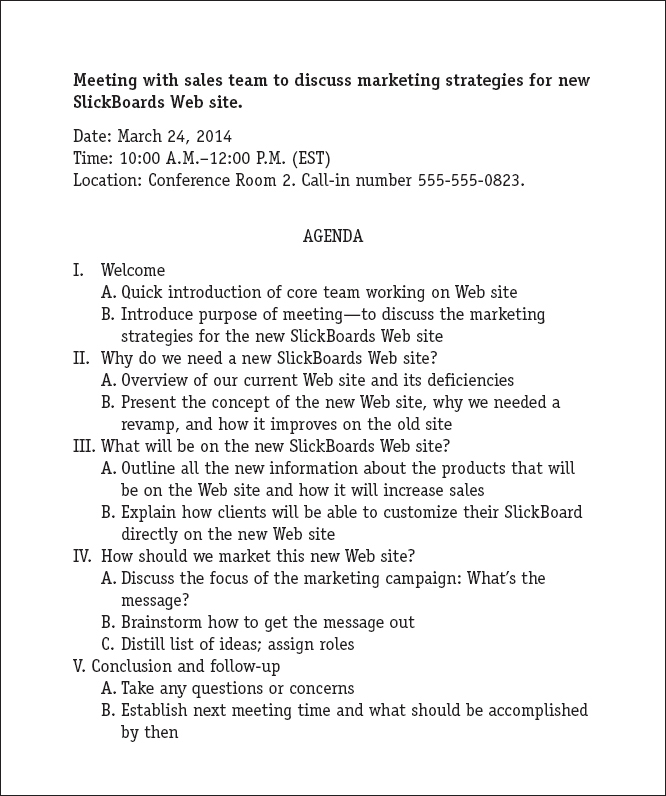Planning Meetings Effectively
Planning Meetings Effectively
Page 224

Let’s consider all the reasons Julia found the meeting we’ve just described so frustrating. First, it was a bad time: she was struggling to meet deadlines and really didn’t want to stop working to sit in on a meeting. Worse, she probably didn’t really have to be there either—the client was using the meeting to inform the sales team about the site as a whole, not to discuss Julia’s design. Further complicating the issue were the meeting’s late start, Julia’s unfamiliarity with the sales force, and a medium—speakerphone—that limited Julia’s communication with the team. Put simply, the meeting was poorly planned.
Proper planning is crucial for successful meetings. Making a few decisions beforehand and taking steps to clarify goals and logistics for the team can lead to more effective decision making during the meeting itself. There are several steps that group leaders can take to plan meetings more effectively.
Justify the Meeting. Before calling a meeting, a group leader should consider what he or she wants to accomplish and assess whether a meeting is even necessary to meet that goal. If there are no clear goals for a meeting, it’s impossible for any goals to be met as a result of it. The leader also needs to ensure that only those whose presence is necessary in order to meet the goals or who would truly benefit from attending are included. While not a typical meeting, a good example of this is when Harry Potter first begins to assemble Dumbledore’s Army in Harry Potter and the Order of the Phoenix. He determines the goals of the meetings (to teach other students how to defend themselves in the face of Voldemort’s return to power) and invites only students who he knows will use the training and won’t derail the meeting.
If there are no clear goals for a meeting, it’s impossible for any goals to be met as a result of it.
In many cases, meetings can be avoided altogether or made smaller and more efficient by asking team members to contribute information ahead of time or by simply picking up the phone to ask someone a question when one arises (Conlin, 2006).
Clarify the Purpose and the Participants. If a meeting is necessary, it is the responsibility of the leader to clearly articulate the goals of the meeting and the roles of everyone who is to attend. Think back to Julia’s situation. Her client, Jacob, wants to get his sales force interested and excited about the launch of the Web site. Getting the sales force together to view the beta version and get feedback on it might seem like a good way to brainstorm ideas for marketing. But Jacob failed to clarify what he wanted to accomplish at the meeting and what Julia’s role would be. He might have made more efficient use of Julia’s time by discussing elements of the design with her prior to the meeting or by asking her to outline a few key features for him to use at the meeting instead of requiring her to attend.
Set an Agenda. President Dwight D. Eisenhower noted, “I have often found that plans are useless, but planning is indispensable.” Creating a plan is a valuable phase in decision making, even if the plan itself isn’t followed to the letter in the end. Setting an agenda is crucial.
An agenda for a meeting should detail the meeting’s subject, goal, logistics, and schedule. It should list or include any materials that participants would need to have read or reviewed in advance of the meeting so that everyone arrives with the appropriate background on the issue. Think of your agenda as a checklist—an essential component of meeting success (Gawande, 2009). A sample agenda for Jacob’s meeting is provided in Figure 10.2.
